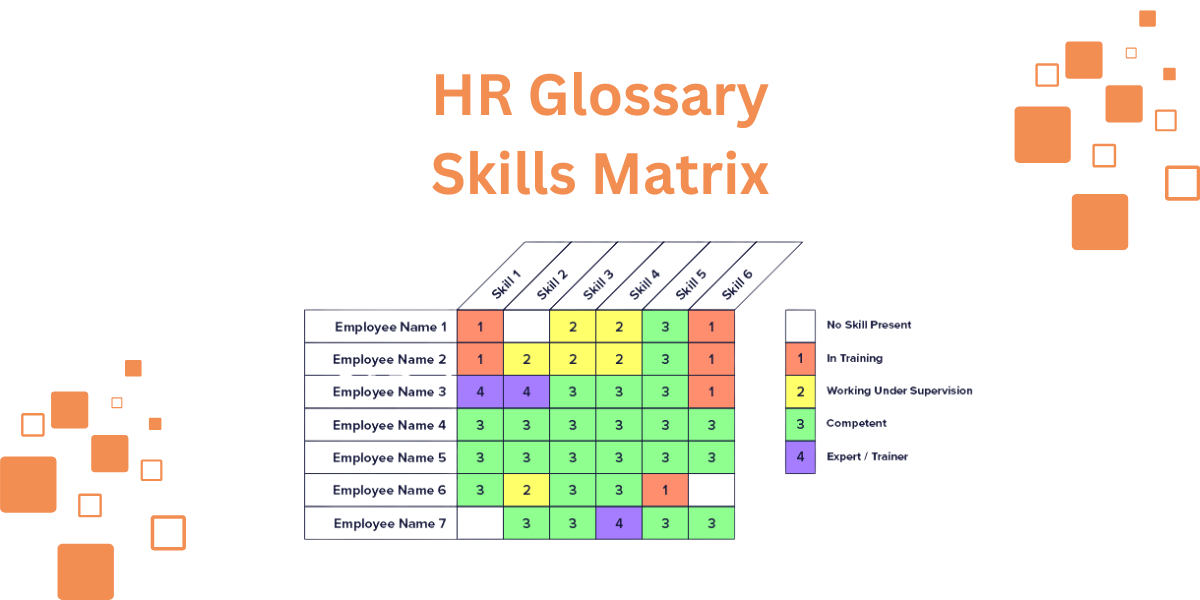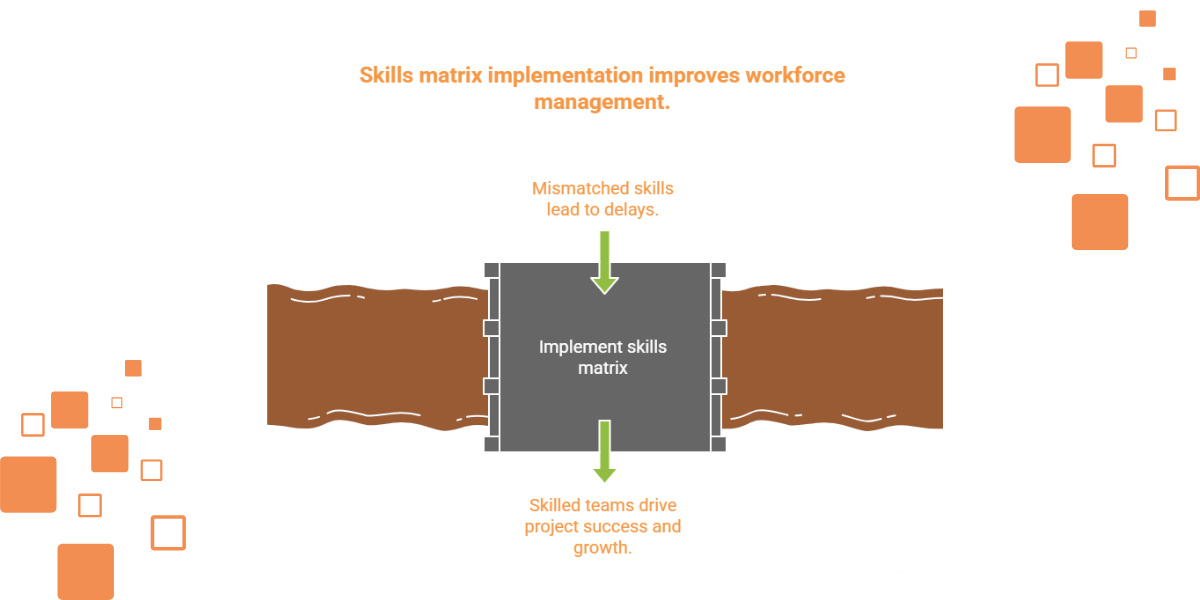Skills Matrix: Mapping Competencies For Smarter Workforce Planning
Did you know that 75 percent of the companies struggle to hire in important positions? This is a concerning number that highlights a significant issue in the modern, rapidly changing job market. But what should happen if there were a way of working around this? Imagine that you could see someone on your team as a Python expert, a project management novice, or a communication specialist.
This is where a skills matrix HR will be a game-changer. It is a strong workforce-planning tool today. This blog will explain the skills matrix. We will begin with its clear meaning, then proceed to a discussion of its main rules, and provide examples of its real-world use. We will also provide you with useful tips to help you get the most out of it.
Lastly, we will discuss some key terms and address some common questions. Ultimately, you will be equipped to transform the way you manage talent within your team. Let’s get started.

Definition: What Is A Skills Matrix?
A skills matrix is a visual or tabular listing of employees, their skills, and corresponding levels of ability. It helps in planning the workforce, checking training needs, and staffing projects. Consider a software company preparing to develop a new product sprint. Looking at a skills matrix helps managers identify gaps by assessing the company's skills and determining which individuals to place in the right positions.
It is a real-time map of what your team can do. This is a simple tool that will help you eliminate guesswork. You can make informed choices about the most valuable asset you have: your people. It provides a clear picture of what you have and what you need in a straightforward manner. This clarity lowers risk and increases efficiency.

The Principles Of A Skills Matrix
The skills matrix is built on the following rules:
Centralization Of Data
Ensure that all skill and ability information is stored in one secure location. This removes scattered information. Everything is available under one roof.
Consistency And Standardization
Personal opinion should be reduced by using clear rating scales, e.g., beginner to expert. It needs to be accepted by everybody that a certain level of ability means something. This ensures reliable data.
Consistency And Standardization
Allow managers and employees to access and update their skill profiles safely. Since everyone can see the same information, this creates trust and invites teamwork.
Scalability
Ensure that it can grow with teams, technologies, and evolving company needs. The matrix can be updated to add new jobs and new skills without needing a full redesign.
Integration With Human Resource System
Link to Human Resource Information System (HRIS), performance management system, and learning management tools. Automatic updates link and give you more insight. It ties together your data on skills with that of other people.
These rules will help in generating better insights, utilizing resources more effectively, and developing training plans. They make a simple spreadsheet a useful planning tool.
Practical Examples Of A Skills Matrix In Action
A skills matrix can change the management of the workforce in many ways:

Project Staffing
Place qualified employees in specific positions based on their proven skills. This will make sure the start of projects is strong. It also eliminates delays and rework.
Training And Development
Identify team gaps and develop targeted learning programs. If a lack of knowledge is evident across the entire team, consider running a group training course. This is significantly more effective than personal training programs.
Succession Planning
Identify high-potential candidates and train them to be leaders. You can identify who is a good candidate for a leadership role by assessing the combination of technical skills and soft skills.
Through these practices, organizations reduce downtimes, increase productivity, and improve talent management. Consider the following table. It gives you the idea of what this would look like.
Tips To Maximize The Value Of Your Skills Matrix
The skills matrix can only be as useful as the information you enter. Below are some main tips to make the most of it.
Tip, Action Step Example
Define Clear Skill Categories
Sort group skills as technical, soft, and role-based. Separate code languages and communication skills.
Use A Standard Rating Scale
Use a 1-5 Scale. 1 = Beginner, 5 = Expert.
Keep Data Current
Update your system every three months. Automated manager reminders.
Expansion With Human Resource (HR) Tools
Connect with learning systems. Use trigger courses to address any skill gaps.
Involve Employees
Promote self-audit and checks by the managers. Knowledge check by peers.
Visualize Insights
Prepare dashboards in order to make quick decisions. Heatmaps of skill gaps.
Protect Data Privacy
Restrict Access and adhere to regulations. Approval in Human Resources (HR) software
Key Terms Related To Skills Matrices
- Competency Framework: A set of skills, knowledge, and behavior in certain positions.
- Gap Analysis: It is one manner of determining the discrepancies between the current and the necessary skills.
- Proficiency Level: The level of skill a person has.
- Reskilling: Training employees to learn new skills in other roles.
- Upskilling: Improving the current skills to match the changing jobs.
- Talent Mapping: Long-term planning to match workforce skills with the future.
TL;DR
A skills matrix is a straightforward and useful tool for workforce planning. It shows the skills and levels of the employees. It provides a clear picture of a team's strengths and gaps to its managers. It helps in staffing, training, growth, and succession planning of projects. It keeps the information in one place. It uses clear rating scales.
It is open and links with Human Resource Information System (HRIS) tools. It is more useful when updated often. It involves employees. Skills matrices improve productivity and also reduce risk. They make talent management more effective in all departments.
Frequently Asked Questions
Why Is A Skills Matrix Important?
It helps managers share resources, schedule training, and reduce the risks associated with projects. It also enhances employee involvement, as it provides a clear career path for them.
How Often Should It Be Updated?
Check at least once every three months, or more frequently in cases of significant roles or changes in technology.
Can Employees Self-Assess Their Skills?
Yes, but mix self-check with manager review to confirm. This gives a fairer view.
What Tools Can Help Build A Skills Matrix?
Simple Excel sheets will suffice, but specialized talent management software and Human Resource Information System (HRIS) tools offer greater flexibility.
Is It Only For Technical Teams?
No. It is useful to all the departments, from sales to operations. Any team has a mix of skills that can be mapped.
How Does It Support Compliance Or Audits?
It keeps a record of workforce skills that can be checked against the rules.
Explore Skills Matrix Software Solutions
Connected Human Resource (HR) platforms also simplify the process of data collection, updates, and reports, enabling one to plan talent effectively and manage the workforce efficiently.
Do not waste talent. Start mapping your skills now!




























